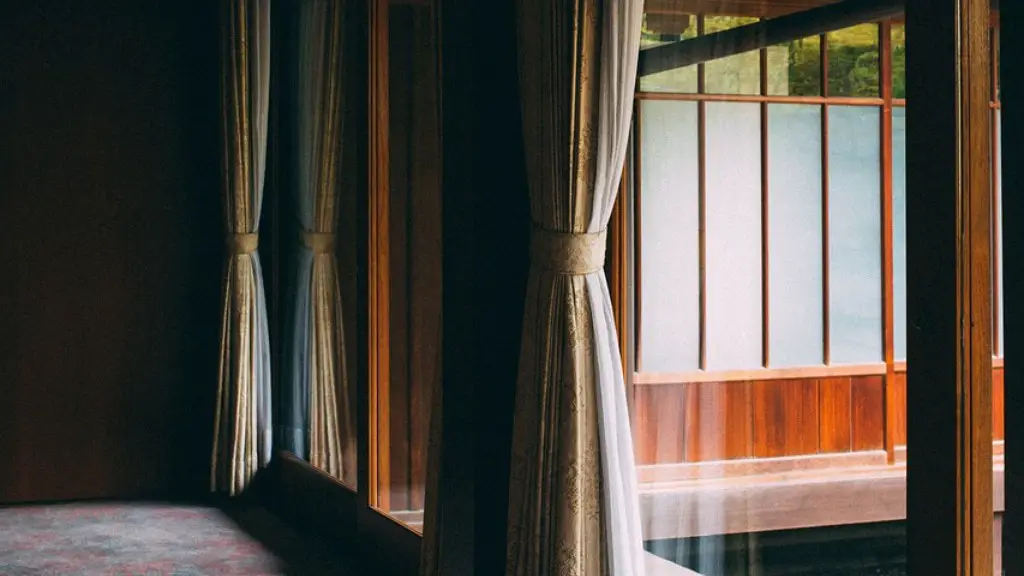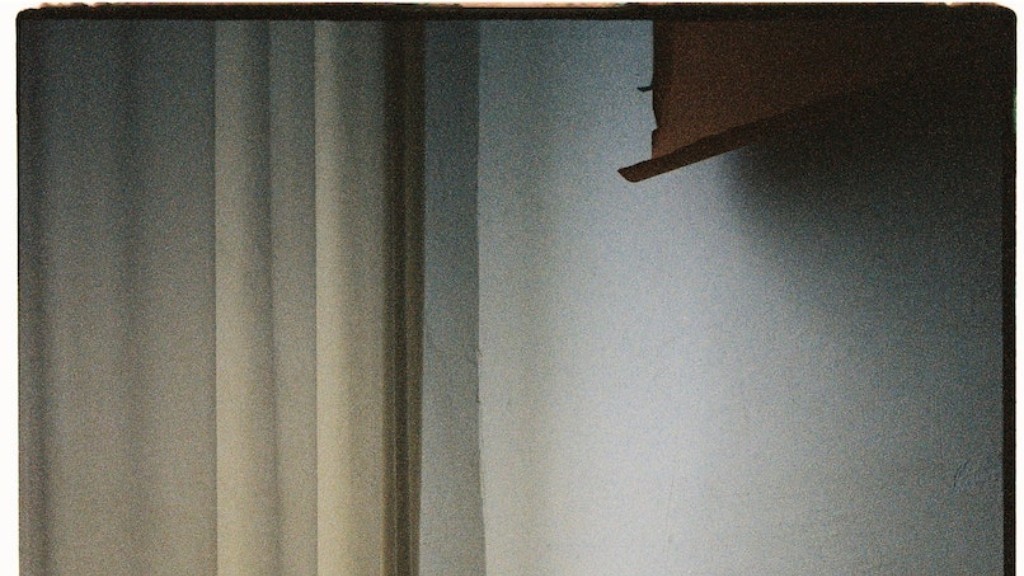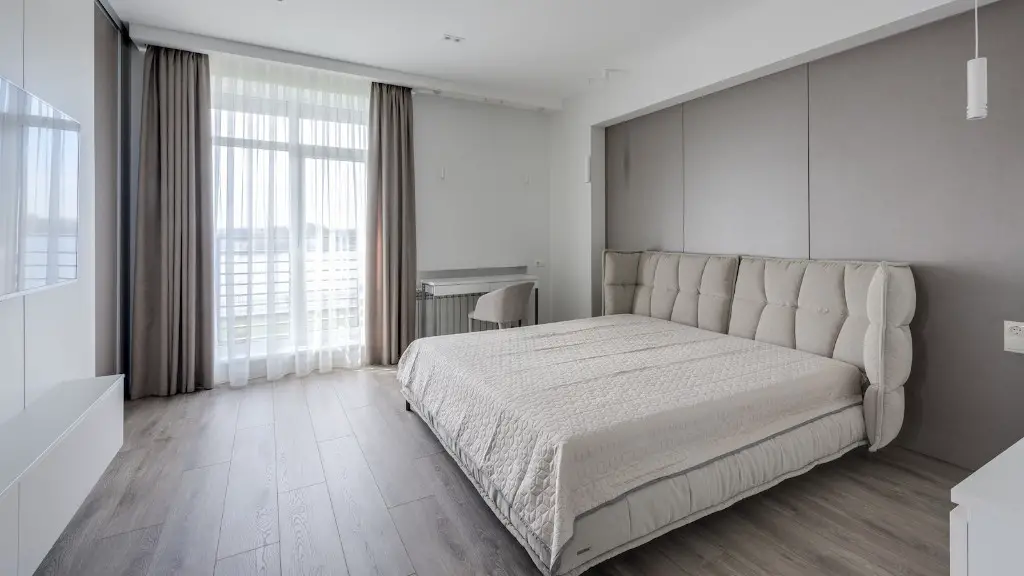If you are looking for a way to reduce the amount of noise coming into your home, you may be wondering if curtains can absorb sound. The answer is yes, curtains can help to reduce noise levels in your home. But how do they work? Curtains work by absorbing sound waves and converting them into heat energy. This process happens because of the way that curtains are made. They are typically made of heavy, thick fabric that is able to trap sound waves and prevent them from bouncing around the room.
Yes, curtains can help to absorb sound and reduce the amount of noise that enters a room. By hanging heavy curtains or drapes over windows and on walls, you can create a sound barrier that will help to reduce the amount of noise that comes into a room.
What type of curtains absorb sound?
If you’re looking for a way to block out sound and light, heavy blackout curtains are the way to go. Not only do they block out noise, but they also help keep the heat in and prevent cold drafts from coming in.
Curtains can be a great way to help reduce the amount of noise pollution you hear inside your home. Curtains work by absorbing and dispersing sound energy, which helps to dampen the overall level of noise. If you have a flat, sturdy wall or window, sound waves can bounce off of it and make the noise level inside your home higher. Curtains can help to reduce this by absorbing the sound energy and dispersing it, which can help to make your home a quieter place.
How much do curtains reduce sound
Curtains are a popular choice for soundproofing because they are relatively cheap and can provide a decent level of sound absorption. However, it is important to note that curtains will not completely block out all noise. In general, you can expect up to a 75% soundproofing effect using curtains. More expensive, newer models of sound blocking curtains may be more effective, but they will also be more expensive.
Adding carpet, plush furniture, window trimmings and even plants can turn a hard, flat room into a softer, quieter area. Gaps under and around doors can be sealed to help reduce noise. Electrical outlets and vents can be covered with acoustic soundproofing materials to help reduce noise.
How can I soundproof my room cheaply?
There are a few ways that you can soundproof a room cheaply and easily. One way is to use bookshelves and furniture as a wall divider. This will help to absorb some of the sound. Another way is to use wooden shutters. These can be placed over windows and doors to help reduce the amount of noise that comes in. Another option is to use sound dampening curtains. These can be hung from the ceiling or walls and will help to reduce the amount of noise in the room. Finally, you can use soft furnishings such as rugs and carpets to help absorb sound.
Sound-control acoustic curtains are an effective way to reduce noise in a space. They can be used in lieu of standard wall panels where sound absorption is required, but where panels would not be possible or practical. Acoustic curtains are particularly useful in situations where the material must be retracted, such as over glass, in order to allow for a clear view during non-critical listening functions.
Do blackout curtains cancel noise?
Blackout curtains are a type of thick fabric that can provide some sound insulation, but the amount of sound reduction will vary depending on the thickness and density of the fabric. In general, blackout curtains will provide some sound reduction, but they may not be as effective at blocking out sound as other types of soundproofing materials.
There are a variety of materials that can be used for insulation, each with their own benefits and drawbacks. Felt is a good insulator, but is not as durable as some other options. Glass wool is a bit more durable, but is also more expensive. Melamine foam is very cheap, but does not insulate as well as other options. Polyester wool is a good middle-of-the-road option, while polyurethane foam is very durable but also quite expensive. Rock wool is not as popular as other options, but is a good insulator.
Can curtains make room quieter
Curtains are a great way to reduce noise and create a more peaceful environment in your home. There are a few things to keep in mind when choosing curtains for noise reduction. The thickness of the fabric is important – thicker fabrics will block more sound. The heavier the curtain, the better it will be at sound proofing. The number of layers also makes a difference – multiple layers of thinner fabric will block more sound than a single thick layer. Finally, the material of the curtain is also important. Thick, heavy fabrics like velvet or denim will block more sound than lighter materials like linen or cotton.
There are a variety of ways to soundproof a room, depending on the source of the noise. If the noise is coming from outside the room, you’ll want to weatherproof your door and windows. If the noise is coming from inside the room, you can try hanging door curtains or using a thick rug pad to muffle the sound. You can also reduce reflected noise by placing acoustic panels on the walls or using a bookcase to block the sound.
What materials can block sound?
Acoustic membrane is a material that is used to absorb sound. It is typically made of a thin layer of foam or fabric that is sandwiched between two thin sheets of metal or plastic.
Acoustic mineral wool is a type of insulation that is made from mineral wool fibers. It is commonly used in acoustic applications because it is effective at absorbing sound.
Fibreglass is a type of material that is made from glass fibers. It is often used in acoustic applications because it is effective at absorbing sound.
Resilient channels are used to help reduce the transmission of sound through a wall or ceiling. They are typically made of metal or plastic and are installed between the wall studs or joists.
Acoustic hangers are used to hung Acoustic Mineral Wool Cavity Insulation and Fibreglass in order to achieve better sound absorption.
Soundproof drywall is a type of drywall that is designed to reduce the transmission of sound. It is typically made of a thicker layer of gypsum board and is often used in applications where soundproofing is necessary.
Dense board is a type of material that is made from wood fibers. It is often used in acoustic applications because it is effective at absorbing
To soundproof a room, you need to focus on absorbing the sound waves. This can be done by having more soft, absorbent materials like foam, carpet, blankets, and acoustic panels. Another way to soundproof a room is by making sure that your doors and windows are properly sealed. This will help contain noise or keep your room quiet.
There are a few things you can do to help soundproof your walls, including using sound-blocking paints, special drywall, or thick membranes. Insulation can help but generally isn’t enough. Decoupling your wall so it isn’t attached to your neighbor’s wall, or adding mass (or both), will help more.
There are a few easy ways you can help soundproof your apartment through your interior design. Adding a large rug plus a rug pad will help to absorb noise coming into and going out of your space. Hanging canvas art or tapestries on the walls will also help to absorb sound. Choosing soft furnishings like throw pillows and blankets will also help to soundproof your apartment.
How can I soundproof a room without removing drywall?
Mass Loaded Vinyl is a type of material that is used in soundproofing. It is incredibly dense and does a great job of blocking out any noise. When you sandwich mass loaded vinyl between your layers of drywall, it creates a soundproof barrier that will keep any noise from passing through.
If you’re struggling to sleep at night due to noise, there are a few things you can do to try to block it out. First, soundproof your room as much as possible. This may involve investing in some higher-quality materials to help dampen the noise. Second, use high-quality ear plugs. These can be fitted to your specific needs and can really help to muffle outside noise. Third, try using a sound machine. This can create white noise that can help to mask other sounds and help you focus on sleep. Fourth, rearrange your bed so that it’s not right up against the wall. This can help to create a buffer between you and any noise coming from the other side. Finally, if all else fails, you can try sleep hypnosis. This can help you to focus on sleep and ignore any other noise that might be going on around you. If you have a partner, it’s also important to talk to them about your needs. They may not be aware of how disruptive their snoring or other habits can be and simply making them aware can be enough to help them make changes.
Final Words
Curtains can help to reduce the amount of noise that comes into a room, but they will not completely absorb all sound.
Curtains are not effective at absorbing sound. If you are looking to reduce noise in a room, acoustic panels or soundproofing foam are better options.





